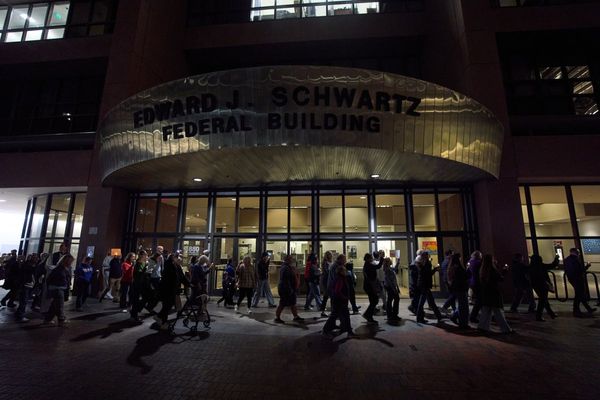
For decades, dual-income households were seen as the ultimate financial safeguard. Two paychecks meant stability, savings, and the freedom to build a better future. Yet in 2025, millions of middle-class couples find themselves living paycheck to paycheck, despite earning more than previous generations ever did. Inflation, housing costs, debt, and lifestyle pressures have quietly rewritten what it means to be “comfortable.” The result? Even financially responsible couples are wondering where their money keeps disappearing every month.
The Cost of Living Has Outpaced Wage Growth
While wages have risen modestly over the past decade, the cost of nearly everything else has skyrocketed. Housing prices, child care, healthcare, and groceries have all climbed faster than income growth. According to the Bureau of Labor Statistics, real wage increases have failed to keep pace with inflation, leaving middle-class families squeezed from every direction. A dual income that once comfortably supported a mortgage, two cars, and vacations now barely covers essentials. The math doesn’t lie. Today’s middle-class couples are working harder than ever just to stay in the same place.
Housing Costs Are Consuming Budgets
The single biggest financial strain for most couples is housing. Whether they’re renting or owning, monthly payments now consume a staggering share of take-home pay. Rising mortgage rates and limited inventory have kept home prices high, while rents have climbed to record levels in major metro areas. Even those who bought years ago are feeling the pinch through property taxes, maintenance, and rising insurance premiums. When a home takes 40% or more of household income, there’s little left for saving or breathing room.
Child Care and Education Are Crushing Expenses
For parents, child care can rival or even exceed a mortgage payment. Many couples discover that one spouse’s entire paycheck goes toward daycare, leaving them wondering whether working is even worth it. Meanwhile, education costs don’t stop after preschool. Extracurricular activities, tutoring, and college savings all add up quickly. In a culture that equates “good parenting” with opportunity, many families overspend trying to give their kids a leg up. The emotional cost of saying no often feels higher than the financial cost of saying yes.
Lifestyle Inflation Quietly Creeps In
Even couples who budget carefully fall prey to lifestyle inflation. The subtle rise in spending that comes with higher income. Dining out, streaming subscriptions, home upgrades, and “convenience spending” all chip away at savings without much notice. Because these purchases feel minor, they rarely trigger guilt, yet together they drain thousands annually. Social media doesn’t help, constantly setting unrealistic expectations for what success should look like. For many middle-class couples, the pressure to live well ends up replacing the ability to live securely.
Debt Is Quietly Undermining Financial Progress
From student loans to car payments, debt is often the silent third partner in a relationship. Even as couples earn more, interest payments eat away at disposable income and delay long-term goals. Many carry multiple forms of debt (credit cards, personal loans, and “buy now, pay later” balances) that collectively feel overwhelming. Refinancing or consolidating can help, but the real issue is dependency on credit to maintain a lifestyle that income alone can’t sustain. Without a plan to aggressively tackle debt, dual incomes simply mask financial instability.
Health Care and Insurance Costs Keep Climbing
Medical costs have quietly become one of the most unpredictable budget killers for middle-class families. Premiums, copays, and out-of-pocket expenses can total thousands per year, even with “good” insurance. One unexpected illness or emergency room visit can derail an entire month’s budget. Dental, vision, and mental health care often fall by the wayside because couples simply can’t afford them. When staying healthy becomes a financial burden, it’s no wonder so many families feel broke despite doing everything right.
Retirement and Emergency Savings Fall to the Bottom of the List
Most middle-class couples want to save; they just can’t find the extra money to do it. Between bills, loans, and inflation, retirement contributions often get postponed “until things calm down.” Unfortunately, that day rarely comes. Without consistent saving, even small financial setbacks can turn into crises, forcing couples to rely on credit cards or 401(k) loans. The emotional weight of feeling unprepared for the future only adds to the sense of financial exhaustion.
The Middle Class Isn’t Failing… The System Is
When two full-time incomes can’t guarantee stability, it’s not a personal failure. It’s a reflection of a broken economic structure. The middle class is carrying the weight of rising costs, stagnant wages, and impossible expectations. Couples aren’t living beyond their means. They’re surviving within a system that’s priced them out of comfort. The solution starts with awareness: understanding where the money really goes, setting boundaries on lifestyle creep, and fighting for policies that reflect real living costs. Middle-class couples deserve to feel secure, not stretched thin by a system that no longer works for them.
Do you and your partner feel financially stretched even with two incomes? What’s the biggest expense weighing on your household? Share your thoughts in the comments below.
What to Read Next
- 13 Essentials the Middle Class Struggles to Afford Today
- 6 Clues You’re Secretly Living the Upper-Middle Class Lifestyle
- Where the Middle Class Can’t Breathe: 6 States With Crushing Tax Burdens
- The Middle Class Can’t Keep Up—Here’s Where Their Money Is Really Going
- 10 Luxury Cars That The Middle Class Can No Longer Afford
The post Why So Many Middle-Class Couples Feel Broke Despite Dual Incomes appeared first on Clever Dude Personal Finance & Money.







